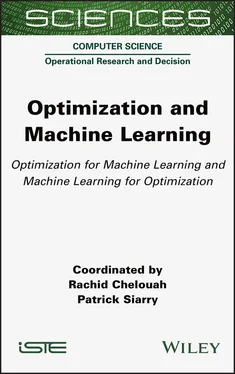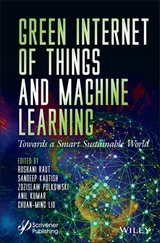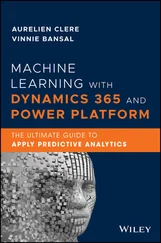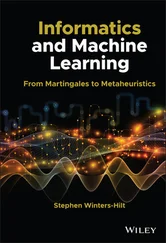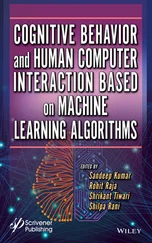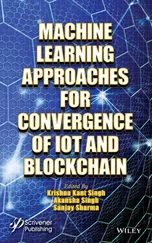5 Chapter 5Figure 5.1. The Interactive Personalized Recommender framework models the mutual...Figure 5.2. The Interactive Personalized Recommender framework models the mutual...Figure 5.3. The interactive attention network recommender Figure 5.4. The stacked content-based filtering recommender Figure 5.5. Hyperparameter searching for the stack-based random forest Figure 5.6. Hyperparameters analysis for interactive attention network recommend...Figure 5.7. Visualization of the interactive co-attention weights for 10 items a...Figure 5.8. Results of the comparison on MovieLens dataset. Evaluation of the pe...Figure 5.9. Results of the comparison on MovieLens dataset. Evaluation of the pe...
6 Chapter 6Figure 6.1. Text classification steps and methods tested
7 Chapter 7Figure 7.1. Mobile robot navigation approaches Figure 7.2. Structure of robot architecture Figure 7.3. Mobile robot control architecture based agent. For a color version o...Figure 7.4. Measurements provided by infrared sensors (information of perception...Figure 7.5. Method for calculating speeds of the right and left wheels of the ro...Figure 7.6. Process of locomotion agent Figure 7.7. Feasibility agent general process Figure 7.8. Fuzzy controller agent general process Figure 7.9. Agent interaction and communication. For a color version of this fig...Figure 7.10. Presentation of the robot Figure 7.11. Robot and obstacles information Figure 7.12. Fuzzy controller agent interaction with navigation system agent Figure 7.13. Representation of fuzzy subsets of the distance Figure 7.14. Representation of fuzzy subsets of the γ Figure 7.15. Representation of output fuzzy subsets Δθ Figure 7.16. Representation of output fuzzy subsets Δv Figure 7.17. Representation of the eight different situations listed Figure 7.18. Situation 1 (avoid near in front of) Figure 7.19. Situation 2 (avoid near left) Figure 7.20. Situation 3 (avoid near right) Figure 7.21. Situation 4 (situation corridor) Figure 7.22. Situation 5 (blocking) Figure 7.23. Situation 6 (corner left) Figures 7.24. Situation 7 (corner right) Figure 7.25. Situation 8 (far obstacle: approaching the goal) Figure 7.26. The robot, in environments 1 and 2, reaches the target (all obstacl...Figure 7.27. The robot reaches the target in complex environments (environments ...Figure 7.28. The robot in a deadlock situation. For a color version of this figu...
8 Chapter 8Figure 8.1. Land category distribution Figure 8.2. Root_shell category distribution Figure 8.3. Logged_in category distribution Figure 8.4. Is_host_login category distribution Figure 8.5. Is_guest_login category distribution Figure 8.6. Distribution of the target column values in the train set Figure 8.7. Distribution of the target column values in the test set Figure 8.8. Protocol type value distribution Figure 8.9. Flag value distribution Figure 8.10. Su attempted value distribution Figure 8.11. Wrong fragment value distribution Figure 8.12. Urgent value distribution Figure 8.13. Service value distribution Figure 8.14. Distribution of discrete and continuous features inside the normali...Figure 8.15. Correlation matrix of all the features of the dataset. A lighter co...Figure 8.16. Distribution of the values of each numerical feature in the normali...Figure 8.17. Distribution of the values of each numerical feature in the normali...Figure 8.18. Distribution of src_bytes before normalization Figure 8.19. Distribution of src_bytes after normalization Figure 8.20. Distribution of dst_host_count before normalization Figure 8.21. Distribution of dst_host_count after normalization Figure 8.22. Top features ranked by importance found by the ExtraTrees Classifie...Figure 8.23. Top 30 features ranked by importance found by univariate selection Figure 8.24. Learning curves (accuracy and loss) of the first model (all feature...Figure 8.25. Learning curves (accuracy and loss) of the second model (all featur...Figure 8.26. Learning curves (accuracy and loss) of the third model (all feature...Figure 8.27. Learning curves (accuracy and loss) of the low dropout model Figure 8.28. Possible points of interception for an NIDS Figure 8.29. Possible steps of the IDS once deployed in a real system Figure 8.30. Components of the TFX framework as described in the official guide
1 Chapter 1 Table 1.1. Comparative study of the 2L-CVRP Table 1.2. Comparative study of the 3L-CVRP
2 Chapter 2Table 2.1. Comparison of existing scheduling approaches Table 2.2. Solution encoding
3 Chapter 3Table 3.1. Most commonly used S and V transfer functions for feature section (Mi...Table 3.2. Wrapper parameters Table 3.3. Wrapper performance metrics
4 Chapter 4Table 4.1. The classification of simple assembly line balancing problems with th...Table 4.2. The classification of mixed-model assembly line balancing problems wi...Table 4.3. Ranked positional weight list (RPW_list) Table 4.4. Iteration x (α = 1) Table 4.5. Iteration y (α = 0.5) Table 4.6. Iteration z (α = 0.8) Table 4.7. Comparison of solutions Table 4.8. Small-sized problem Table 4.9. Medium-sized problem Table 4.10. Large-sized problem Table 4.11. Parameters used in solving proposed problems Table 4.12. Results obtained by hybrid reactive GRASP and hybrid basic GRASP aft...Table 4.13. Results obtained by hybrid reactive GRASP and hybrid basic GRASP aft...Table 4.14. Results obtained by hybrid reactive GRASP and basic GRASP after solv...Table 4.15. General comparison between the hybrid reactive GRASP and the basic G...
5 Chapter 5Table 5.1. Notations Table 5.2. MovieLens 1M specifications Table 5.3. The best scoring stacked content-based filtering recommenders Table 5.4. Recommendation accuracy scores (%) of compared methods conducted on M...
6 Chapter 6Table 6.1. Results for composition Extract Features and ML algorithms – Simple E...Table 6.2. Results for composition Extract Features and ML algorithms – Simple E...Table 6.3. Results for composition Extract Features and ML algorithms – FastText...Table 6.4. Results for composition Extract Features and ML algorithms – FastText...Table 6.5. Results for composition Extract Features and ML algorithms – BERT Table 6.6. Confusion matrix
7 Chapter 8Table 8.1. Summary of the attributes of the NSL-KDD dataset Table 8.2. Features of the NSL-KDD dataset, divided by type Table 8.3. Shape and results of the first model Table 8.4. Shape and results of the second and third models Table 8.5. Shape and results of the dropout models Table 8.6. Shape and results of the deep models Table 8.7. Comparison between models trained on ExtraTrees Classifier selected f...
1 Cover
2 Table of Contents
3 Title Page SCIENCES Computer Science , Field Directors – Valérie Berthé and Jean-Charles Pomerol Operational Research and Decision , Subject Head – Patrick Siarry
4 Copyright First published 2022 in Great Britain and the United States by ISTE Ltd and John Wiley & Sons, Inc. Apart from any fair dealing for the purposes of research or private study, or criticism or review, as permitted under the Copyright, Designs and Patents Act 1988, this publication may only be reproduced, stored or transmitted, in any form or by any means, with the prior permission in writing of the publishers, or in the case of reprographic reproduction in accordance with the terms and licenses issued by the CLA. Enquiries concerning reproduction outside these terms should be sent to the publishers at the under mentioned address: ISTE Ltd 27-37 St George’s Road London SW19 4EU UK www.iste.co.uk John Wiley & Sons, Inc 111 River Street Hoboken, NJ 07030 USA www.wiley.com © ISTE Ltd 2022 The rights of Rachid Chelouah and Patrick Siarry to be identified as the authors of this work have been asserted by them in accordance with the Copyright, Designs and Patents Act 1988. Library of Congress Control Number: 2021949293 British Library Cataloguing-in-Publication Data A CIP record for this book is available from the British Library ISBN 978-1-78945-071-2 ERC code: PE1 Mathematics PE1_19 Control theory and optimization PE6 Computer Science and Informatics PE6_11 Machine learning, statistical data processing and applications using signal processing (e.g. speech, image, video)
Читать дальше
